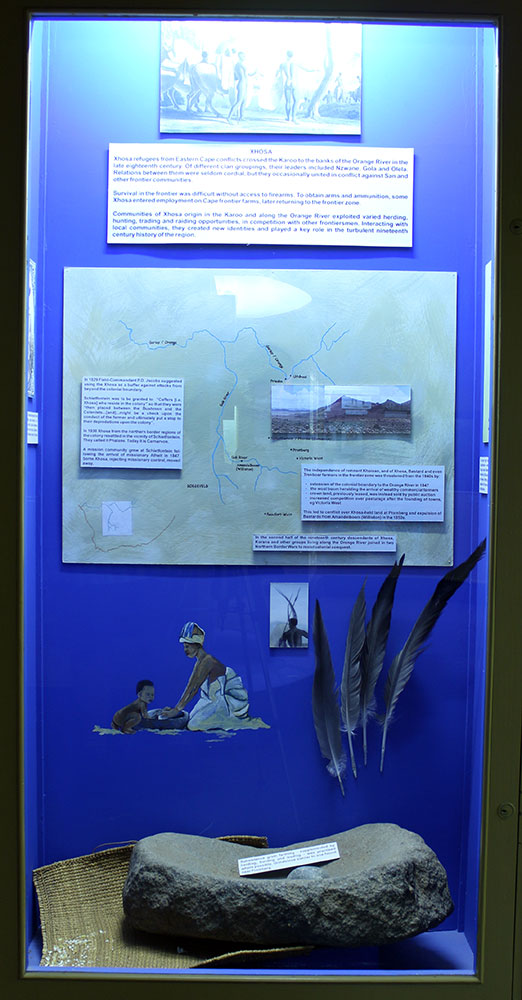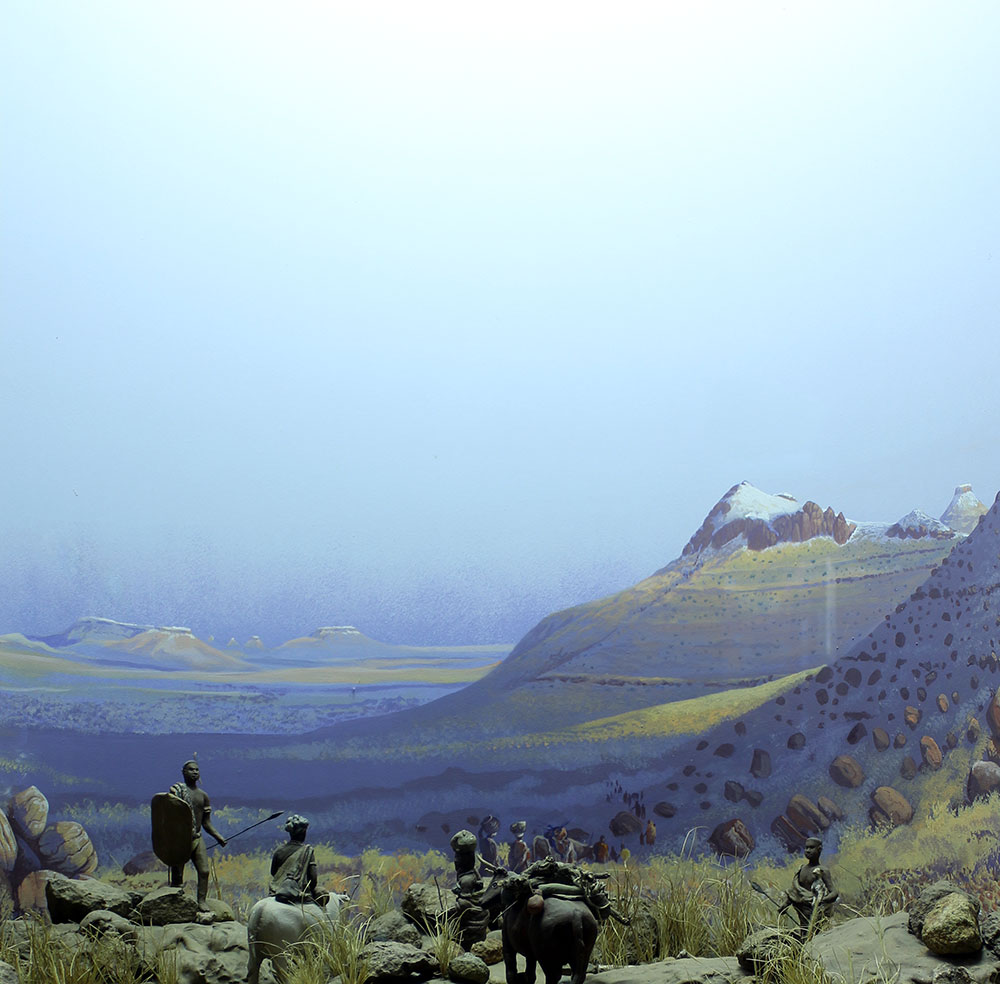Xhosa of the Gareep or Orange River
- Xhosa of the Gariep or Orange River
- https://museumsnc.co.za/new_site/wp-content/uploads/2021/04/xhosa-thumb.jpg
- ALL CATEGORIES
- https://museumsnc.co.za/new_site/wp-content/uploads/2021/04/Xhosa-Voiceover.mp3

Various groups of Xhosa were driven from the Eastern Cape through conflict in the late eighteenth century. Some Xhosa settled along the Orange River near Prieska, while others established themselves in the Karoo as subsistence herders, hunters and traders.
Of different clan groupings, their leaders included Nzwane, Gola and Olela. Relations between them were seldom cordial, but they occasionally united in conflict against San and other frontier communities.
Some Xhosa entered employment on Cape frontier farms to obtain access to firearms, later returning to the frontier zone to exploit varied herding, hunting, trading and raiding opportunities, in competition with other frontiersmen. Interacting with local communities, they created new identities and played a key role in the turbulent nineteenth century history of the Northern Cape region. Nzwane worked for Floris Visser, Field Cornet of the Roggeveld. He learned Dutch, and adopted the name Danster. As a successful raider, Danster formed alliances with colonial deserters, Griqua rebels, and even white farmers, in illicit arms trade. Danster is reputed to have been imprisoned briefly on Robben Island in the late 1820s, escaping by boat.

In 1829 Field-Commandant P.D. Jacobs suggested using the Xhosa as a buffer for farmers against attacks from beyond the colonial boundary. Schietfontein was to be granted to Xhosa who reside in the colony, so that they were “placed between the Bushmen and the Colonists [and] might be a check upon the conduct of the former, and ultimately put a stop to their depredations upon the colony”. In 1830, Xhosa from the northern border regions of the colony resettled in the vicinity of Schietfontein. They called it Phalane. Today it is Carnarvon. A mission community grew at Schietfontein following the arrival of missionary Alheit in 1847.
The independence of remnant Khoisan, and of Xhosa, Bastard and even Trekboer farmers in the frontier zone was threatened from the 1840s by several factors. First, the colonial boundary was extended to the Orange River in 1847. Next, a wool boom heralded the arrival of wealthy commercial sheep farmers, and Crown land, previously leased, was instead sold by public auction. There was finally, increased competition over pasturage after the founding of towns, for example Victoria West. This led to direct conflict over Xhosa-held land at Pramberg (near Victoria West) and expulsion of Bastards from Amandelboom (now Williston) in the 1850s. In the second half of the nineteenth century, descendants of Xhosa, Korana and other groups living along the Orange River, joined in two Northern Border Wars, to resist colonial conquest.
